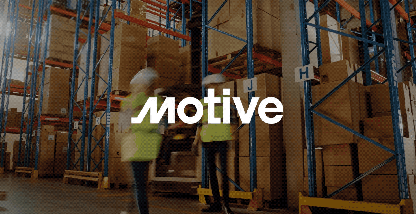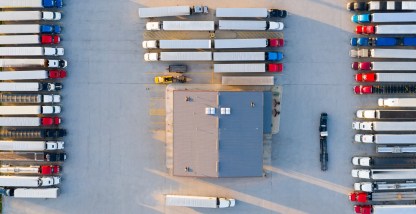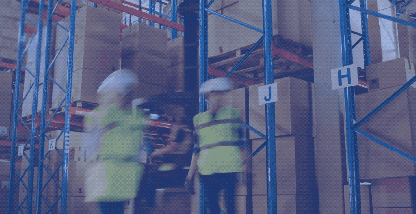Editor’s note: This is part one of a three-part series on supply chain challenges. Part one looks at challenges taking place at the Port of Long Beach. Part two explores supply chain impacts in trucking, construction, and oil and gas. Part three looks at the challenges that rail operators are confronting in rail yards around the country.
What started as a rush to shop from home during the pandemic has put a burden on the global supply chain that isn’t relenting. With the holiday season upon us, some shipments may be delayed unless magic starts to happen soon. Since July 2020, people on the frontlines of the U.S. transportation industry have seen the logjam worsen as a massive increase in supply started coming from Asia and hasn’t stopped.
More than a year later, American industries from trucking to construction are experiencing a “perfect storm” that has exposed supply chain vulnerabilities and paralyzed the movement of freight into and out of America’s largest ports. Along the way, inertia in the movement of shipments is delaying building projects, jacking up costs, and could make some holiday gifts scarce.
In an exclusive interview with Motive, Noel Hacegaba, Deputy Executive Director and Chief Operating Officer at the Port of Long Beach, discusses what’s driving the supply chain breakdowns at the ports, and the technological solutions that can help repair them.
Supply chain fragmentation is hindering ports’ ability to work efficiently
As Deputy Executive Director and Chief Operating Officer at the Port of Long Beach, Hacegaba oversees the day-to-day operations of the nation’s second-largest seaport, including commercial operations, security, real estate, human resources, and government relations. “I feel like I am in the eye of the hurricane,” Hacegaba says. “I stay centered and focused while everything around me is highly volatile.”
What does volatility look like in Hacegaba’s realm? “In the Port of Long Beach right at this moment there are 77 container vessels at anchor,” he says. “These are 77 above normal, and they are waiting their turn for the terminal to become available.”
Inside the port’s terminals, containers transported by ships from Asia are piling up in record numbers. “The terminals are so full of containers that there is less velocity and less maneuverability,” Hacegaba explains. “It’s easy to look at the port and say it’s a port congestion problem, but congestion at the port is just a symptom of a larger problem. In southern California, there are 2 billion square feet of warehouse and distribution space within 50 miles of the port. You would think that would be enough space. Clearly, it’s not.”
As Hacegaba keeps his cool “in the eye of the hurricane,” record volumes and tightened capacity across each leg of the supply chain are driving unprecedented bottlenecks and exposing the supply chain’s fragmented structure.
“The record volumes are the result of people buying more merchandise during a pandemic that confined us to our homes,” says Hacegaba. “Americans’ disposable income, previously spent on going out to eat and going to the gym, transitioned to buying goods online. Now you have a supply chain that has less capacity — not only less physical capacity but also tightened capacity that has resulted from a shortage of workers. The combination of these factors has severely overwhelmed the supply chain.”
The dependence of ports, trucking fleets, and railroads upon one another has been exposed. Where in the past fragmentation had been an asset that allowed freight to be more nimble and move seamlessly, it’s now a vulnerability. As terminals and ships serve as makeshift warehouses, the pileup of cargo is impeding velocity — the port’s ability to get things done as quickly as possible. “Our ability as a port to be efficient and reliable depends on our velocity,” Hacegaba says. “Velocity is key, and right now we don’t have it.”
A shortage of warehouse space is causing containers to pile up at ports
According to an article in the Wall Street Journal, the ports of Los Angeles and Long Beach handle about one-third of U.S. container imports, most of them coming from Asia. Seaborne imports to the ports ultimately destined for Chicago and the surrounding region rose 32% year-over-year in the second quarter of 2021 and 18% compared with the same period in 2019, the article stated. Hacegaba estimates that at this moment, about 40% of all containers sitting in the Port of Long Beach terminal have been there for nine days or more.
For a visual of what that looks like see this 60 Minutes report on the supply chain crisis.
The container pileup, Hacegaba says, is caused by the shortage of warehouse capacity, and the Port of Long Beach is seeing the shortage manifest at the terminals and on the water. Port staff first started noticing a historic cargo surge late in the summer of 2020.
“The first half of 2020 was doom and gloom,” Hacegaba says. “Trade slowed to a trickle. We weren’t seeing a lot of container volumes in the first half. But manufacturing in Asia quickly recovered. The shipments started coming in record numbers. By July 2020, we had gone from doom and gloom to fast and furious.”
More than a year later, the surge hasn’t let up. Supply chain constraints are further exacerbated by a labor shortage that has resulted in a lack of 80,000 truck drivers nationally to move freight — along with a shortage of workers at virtually every level of the supply chain. While some transportation workers were laid off during the pandemic, others are retiring or leaving the industry altogether. Beyond that, the demand is simply too great for the current labor pool.
To alleviate a stressed system and improve capacity, the Ports of Long Beach and Los Angeles expanded their hours of operation. One terminal in Long Beach, Total Terminals International, operates 24 hours per day Monday through Thursday. On Friday through Sunday, the ports hold extended hours but don’t operate round-the-clock.
Predictive analytics and other technologies are helping to free up the movement of freight
To boost efficiency wherever it can, the Port of Long Beach has used technology to connect drivers to freight. The large containers are offloaded from ships and staged at the terminal, where they’re either loaded onto a rail car or matched to a truck driver. Drivers have to make appointments to access containers at the ports.
Partnering with Blue Cargo, a company that leverages technology to help motor carriers optimize appointments, the Port of Long Beach uses technology to make appointment-making for truck drivers more timely and efficient. By facilitating appointments for dual transactions, the technology keeps freight moving in and out of the port as efficiently as possible.
At its International Transportation Service (ITS) Terminal, the Port of Long Beach uses predictive analytics to facilitate the booking of appointments. “The use of predictive analytics has been a game-changer,” Hacegaba says. “Typically, appointments to take delivery of a container cannot be made until a ship arrives at berth, but predictive analytics allows the motor carrier to book an appointment five days before a ship even arrives.”
By enabling motor carriers to have advanced visibility into where they need to be and when, predictive analytics leads to a new set of efficiencies. It gives terminal operators the visibility they need to plan their labor and equipment days in advance, saving them time in the process.
While technology itself is a tool, “it becomes a solution when it is integrated into the operations,” Hacegaba says. Another terminal, Long Beach Container Terminal, uses application programming interfaces (APIs) that allow the terminal’s operating system to connect with the motor carrier’s transportation management systems.
“That integration facilitates the creation, cancellation, and grouping of truck appointments as drivers look for ways to optimize their operations,” Hacegaba says. “It makes the entire process more seamless, and it helps to alleviate some of the fragmentation.”
The ports have taken unprecedented steps to improve processes and boost on-site efficiencies
The Port of Long Beach has taken other steps to move freight and improve productivity. First, with its STOR project, short for “short-term overflow resource,” the port activated vacant land inside the port with the purpose of storing containers. The land now serves as an extension of the terminal.
“We noticed that our terminals were getting busier by the day and running out of capacity,” Hacegaba says. “We identified the first 17 acres of vacant land — the site of STOR — at Pier S. Now it’s up to 70 acres. For the terminals to handle more containers and process more ships, they needed more space. STOR provides our terminals with immediate relief and flexibility. Now that the site is up to 70 acres, we can fit 16,000 containers in that space — and that’s exactly how many containers are there today.”
After the Port of Long Beach expanded its hours of operation nearly two months ago, it later announced a surcharge that targets inbound containers that have been sitting idle at the terminals for nine days or longer. The surcharge is meant to incentivize the rapid evacuation of long-dwelling containers and move them out.
“The announcement of the fee has already helped to meet its intended objective,” Hacegaba says. “The number of containers sitting in the terminal nine days or longer has declined over 30% since the fee was announced. Based on that progress, we have postponed collection of the fee and are evaluating on a week-to-week basis.”
Most recently, the Port of Long Beach has taken steps to evacuate empty containers from port terminals. Hacegaba estimates that 30% of the containers at the terminals are empties waiting to be sent back to Asia. The port is coordinating with ocean carriers to maximize the number of containers the carriers take back with them when they leave Long Beach. It’s also urging ocean carriers to send “sweeper” vessels, empty ships whose sole objective is to evacuate the huge empty containers and bring them back to China.
“We are literally working around the clock to bring the ships to berth and push those containers out of the terminals as fast as we can,” Hacegaba says. “It’s a challenging period for the supply chain. We welcome the support and engagement of the Administration. They have been working with us on holistic solutions, and we need holistic solutions now more than ever.”
Are your drivers working the frontlines during the supply chain crisis? Show them they’re valued with these helpful communication techniques.







